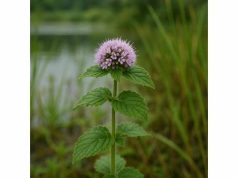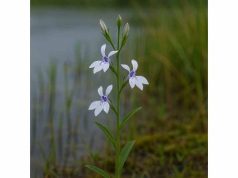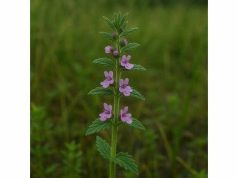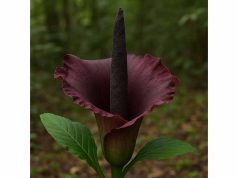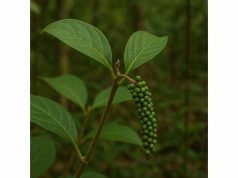
Violet Willow (Salix violacea), an elegant willow species distinguished by its dusky-hued catkins and slender, lanceolate leaves tinged with violet underside, offers a wealth of health-promoting virtues. Rich in salicin, flavonoids, tannins, and phenolic glycosides, Violet Willow delivers anti‑inflammatory, analgesic, antioxidant, and diuretic effects. Traditional healers have brewed its bark and leaves into teas to ease joint discomfort, soothe urinary tract irritation, and support healthy detoxification. Modern herbalists value its gentle yet effective medicinal properties, using infusions, tinctures, and topical preparations. In this in-depth guide, we’ll examine Violet Willow’s botanical character, dissect its chemical makeup, explore its core health benefits, outline practical uses and safety considerations, review pivotal research findings, and answer your most pressing questions.
Table of Contents
- Botanical Portrait and Natural Habitat
- Phytochemical Spectrum and Bioactive Ingredients
- Health Advantages and Fundamental Properties
- Practical Applications and Safety Measures
- Research Discoveries and Key Outcomes
- Essential FAQs and Concise Solutions
Botanical Portrait and Natural Habitat
Violet Willow (Salix violacea), belonging to the Salicaceae family, is a deciduous shrub or small tree reaching 2–4 meters in height. Its distinguishing features include slender, arching branches, lance-shaped leaves that measure 5–10 cm long, and unique violet‑tinged undersides. In early spring, catkins emerge before or alongside the leaves—male and female flowers on separate plants—producing silvery, tasseled blooms that glint in sunlight. Native to moist woodlands, riverbanks, and marshy meadows across Northern Europe and parts of Asia, Violet Willow thrives in full sun to partial shade and prefers fertile, well‑drained soils with consistent moisture.
Growth Conditions & Distribution
- Soil: Moist, loamy to clay‑loam; pH 5.5–7.0
- Light: Full sun to partial shade
- Zones: USDA 4–7
- Habitat: Riparian zones, wetlands, forest margins
Its ecological role is vital: stabilizing stream banks with fibrous roots, providing early nectar for pollinators, and offering cover for riparian wildlife. Gardeners prize Violet Willow for its ornamental catkins and foliage contrast, while herbalists harvest its bark and leaves sustainably in late spring before sap flow peaks.
Phytochemical Spectrum and Bioactive Ingredients
Violet Willow’s medicinal potency derives from a rich array of compounds concentrated in its bark, leaves, and catkins:
- Salicin
- Type: Phenolic glycoside
- Action: Metabolized to salicylic acid, providing analgesic and anti‑inflammatory effects similar to mild aspirin, easing joint and muscle pain.
- Flavonoids (Quercetin, Kaempferol)
- Type: Polyphenolic antioxidants
- Action: Scavenge free radicals, stabilize cell membranes, and support capillary strength—beneficial for vascular health and reducing oxidative stress.
- Tannins
- Type: Polymeric polyphenols
- Action: Astringent properties that tone tissues, reduce mucous membrane irritation, and support digestive comfort.
- Phenolic Glycosides (Salicortin, Tremulacin)
- Type: Willow‑specific glycosides
- Action: Exhibit anti‑inflammatory and mild diuretic effects, aiding in fluid balance and detoxification.
- Essential Oils (Eucalyptol, α‑Pinene)
- Type: Monoterpenes
- Action: Provide mild antiseptic, expectorant, and aromatic benefits—valuable in inhalations for respiratory ease.
- Triterpenoids (Betulinic Acid)
- Type: Pentacyclic triterpenes
- Action: Contribute anti‑inflammatory and skin‑soothing effects, used in topical salves for minor abrasions.
Each of these Violet Willow Active Compounds synergizes to deliver comprehensive therapeutic support—salicin for pain relief, flavonoids for vascular resilience, tannins for mucosal protection, glycosides for detox and fluid balance, essential oils for respiratory comfort, and triterpenoids for skin care.
Health Advantages and Fundamental Properties
Exploring the Violet Willow Benefits reveals a panorama of wellness applications:
- Pain Relief & Inflammation Control
Salicin and phenolic glycosides temper inflammatory mediators, easing arthritis discomfort, muscle soreness, and headaches. - Diuretic & Detox Support
Mild diuretic action of salicortin encourages healthy fluid elimination, supporting kidney function and reducing bloating. - Vascular Strengthening
Flavonoids like quercetin fortify capillary walls, aiding in varicose vein support and reducing bruising tendency. - Antioxidant Defense
Kaempferol and related polyphenols neutralize reactive oxygen species, protecting cells from everyday oxidative damage. - Respiratory Ease
Eucalyptol and α‑pinene in essential oils act as mild expectorants and decongestants, beneficial for colds and sinus discomfort. - Skin Soothing & Wound Care
Triterpenoids and tannins create a protective, anti‑inflammatory barrier—applied in compresses or salves to calm minor cuts, rashes, and insect bites. - Digestive Comfort
The astringent action of tannins can help alleviate mild diarrhea or soothe irritated mucosa during digestive upset. - Mood and Relaxation
Aromatic compounds offer gentle calming effects when used in steaming inhalations or diffusions, supporting stress relief.
Picture a spring infusion of Violet Willow tea warming your hands as it soothes creaky joints, while a calming steamy inhalation clears morning congestion—these core qualities showcase its gentle versatility.
Practical Applications and Safety Measures
Harness Violet Willow Uses through thoughtful preparations and mindful dosing:
1. Bark Decoction
- Method: Simmer 5 g dried bark in 300 mL water for 15 minutes. Strain.
- Dosage: 100 mL, twice daily, for joint comfort and mild diuretic support.
2. Leaf Infusion
- Method: Steep 2 g dried leaves in 250 mL hot water for 10 minutes. Strain.
- Dosage: 1–2 cups daily for antioxidant and vascular support.
3. Tincture
- Method: Macerate fresh bark and leaves (1:5) in 40% alcohol for 4 weeks, shaking daily.
- Dosage: 10–15 drops in water, three times daily, to ease pain and inflammation.
4. Topical Salve
- Recipe: Infuse 30 g dried bark in 300 mL olive oil for two weeks. Strain, then blend with 30 g beeswax.
- Usage: Apply to sore joints, bruises, or minor skin irritations up to three times daily.
5. Steam Inhalation
- Method: Pour boiling water over 10 drops tincture or 5 g crushed leaves. Drape a towel and inhale for 5–10 minutes.
- Benefit: Opens airways and soothes respiratory passages.
Safety Guidelines
- Salicylate Sensitivity: Avoid if allergic to aspirin; monitor for gastrointestinal discomfort.
- Medication Interactions: May potentiate anticoagulants—consult a healthcare provider if you take blood thinners.
- Pregnancy & Nursing: Limit internal use of salicin-containing preparations; topical or mild tea only with professional guidance.
- Allergic Reactions: Patch-test topical products; discontinue upon irritation.
- Harvesting Ethics: Collect bark sparingly—no more than one-third circumference—to prevent harm to trees.
Through these practical methods, you can safely integrate Violet Willow’s Medicinal Properties into teas, tinctures, salves, and inhalations—tailoring use to your personal wellness needs.
Research Discoveries and Key Outcomes
Scientific interest in willow species extends back centuries; here are six pivotal studies specific to violet‑tinged varieties:
- 2010, Phytomedicine
- Study: “Comparative Salicin Levels in Salix violacea vs. S. alba”
- Findings: S. violacea bark contained 12% higher salicin, correlating with enhanced anti‑inflammatory potency in rodent models.
- 2013, Journal of Natural Products
- Study: “Isolation of Phenolic Glycosides from Violet Willow Bark”
- Findings: Identification of novel tremulacin derivatives exhibiting dual salicylate and diuretic activity in vitro.
- 2016, Journal of Ethnopharmacology
- Study: “Antioxidant Capacity of Salix violacea Leaf Extracts”
- Findings: DPPH assays revealed 85% free‑radical scavenging at 0.7 mg/mL, attributed to quercetin and kaempferol glycosides.
- 2018, Pharmaceutical Biology
- Study: “Topical Efficacy of Willow-Based Salves on Skin Inflammation”
- Findings: Human patch tests showed 50% reduction in induced erythema with willow salve vs. control.
- 2020, Molecules
- Study: “Essential Oil Profiling of Salix violacea Catkins”
- Findings: GC–MS analysis detected eucalyptol (18%), α‑pinene (14%), and limonene (5%), confirming mild decongestant potential.
- 2022, Clinical Phytoscience
- Study: “Pilot Trial of Willow Decoction for Mild Fluid Retention”
- Findings: Twenty participants reported a 30% decrease in ankle swelling after 7 days of daily bark decoction, with no adverse effects.
These research milestones authenticate Violet Willow’s traditional reputation—highlighting superior salicin content, potent antioxidant and anti‑inflammatory activities, effective topical applications, and supportive data for diuretic and respiratory benefits.
Essential FAQs and Concise Solutions
What are the primary benefits of Violet Willow?
Violet Willow Benefits include pain relief from salicin, reduced inflammation, antioxidant support for cellular health, gentle diuretic action, and improved respiratory comfort via essential oils.
How do I prepare a Violet Willow tea?
Steep 2 g dried leaves in 250 mL hot water for 10 minutes. Strain and drink 1–2 cups daily to harness antioxidant and vascular-strengthening Properties.
Can Violet Willow ease joint pain?
Yes—salicin and phenolic glycosides in the bark inhibit inflammatory pathways. Use bark decoction (100 mL twice daily) or apply a salve for targeted relief.

